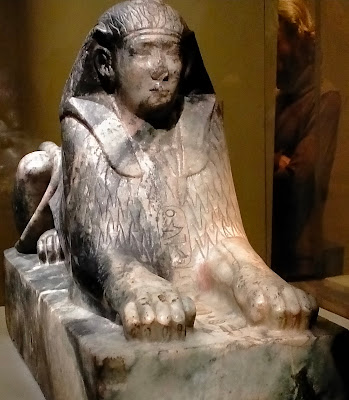 |
| Beautiful exhibits in the Shell Museum |
Wednesday 19th June
The best-laid schemes o' mice an' men gang aft agley
It seems none of the Lakes Entrance tour boats are currently offering tours today (apart from one to a winery, which I don't feel the need to do - it wasn't what I had in mind)
A chat with reception at 9 o'clock and, surprisingly enough, they do have space for me for tonight; their deal is pay two, get the third night free. I'll think about it.
 |
I do love pelicans! In Cunningham Arm
|
I returned to my little apartments to don some warmer clothes. With my winter bushwalking trousers and down jackets I feel a bit like Michelin man and better dressed for the snow than for a walk on the beach.
 |
| Pelicans and more! |
 |
| Spoonbill |
Walking alongside the first lake it's quite pretty, in a very flat kind of way. There's pelicans, ducks, black swans plus pied oyster catchers and cormorants; they're always lovely to watch.
 |
| Spoonbill and friend |
And a bit of excitement - a spoonbill, which I have not seen in the wild before. Also a couple of others I am not sure about naming, though one could be a white heron.
 |
| Cormorants standing guard on the jetty posts |
My first destination for the day was the Entrance Walk; it had plenty of interpretation signs along the way. I'd not really thought about it, but Lakes Entrance is artificially created. Prior to the works to do that, the entrance was only open during times of rivers flooding - as is the case for many of the coastal lakes.
 |
| Old and twisted tea tree |
The first attempt at creating a permanent opening, finished in 1889, was unsuccessful, so the 'new works' were subsequently undertaken, involving massive amounts of granite.
 |
The signal station - used a combination of
coloured basket to communicate conditions |
There were some old and very twisted tea trees, quite fascinating in their form, on the lake side of the dune system separating the lake and the ocean.
 |
Just a gratuitous waratah!
|
Towards the point I explored the little settlement that was the village for the workers when the 'new works' entrance was being constructed, and admired the small group of cormorants standing guard on the posts of a jetty.
 |
One of the 'new works' cottages
|
There were assorted bits of ironmongery to be seen on the 'relics loop' and I'm sure they're of interest to some.
 |
The rocket shed, built in 1890
as part of the new works
to store rocketsused in case of shipwreck
The only government building remaining
from this time and thus of historical significance |
I could see the remains of the wooden pier, where ladies apparently promenaded it their long skirts.
The entrance was pretty turbulent with an outgoing tide I imagine it would be easier to navigate with an incoming tide; there were a few seals playing around.
A bit after midday I was warm enough to remove my down jacket; the soft sand of the beach was fairly hard walking so I looked for a path back to the track on the other side of the spit.
My first attempt at a track had me turn around somewhere in the middle of the dune system, as it involved far too much scrub bashing for my liking. My second attempt stopped at a clearing and I wasn't going any further. Third time lucky, there was a sign and a clear track back over the dunes, with a fence on each side. The last 600m was a more comfortable path to walk.
 |
| The Entrance |
I decided a coffee would be nice before I crossed back over the footbridge. Unfortunately it wasn't 😒
I proceeded towards the shell museum, diverting into the bike hire place on the way. I think I will hire a bike for half a day tomorrow, because I was not going to get to see all the things I wanted to see today on foot, despite having walked close more than 13 kilometres.
There were some very nicely done chainsaw carvings to commemorate heroes of our armed forces during the world wars - so I paused to admire some of those.
 |
| Chainsaw carvings |
The shell museum was amazing, I spent nearly an hour there (and suggested a correction to their labelling of a specimen as Nurse shark emerging from egg case. Nurse sharks are oviparous, the female retains the eggs until they hatch, effectively giving birth to live young, and the egg cases look suspiciously like draftboard shark egg cases that we see regularly when diving. The other suggestion was a name for an unnamed specimen - Lactoria diaphana - the diaphonous or round bellied cowfish I do know well.
 |
| In the shell museum |
I walked back along the Esplanade, admiring the sun on the water.
 |
| Shell museum |
On the way back to my accomodation, I checked out the retail area - which is very small compared to the extensive stretch of accommodation options along the Esplanade. It wasn't exactly buzzing but I indulged in a purchase of a new red summer hat - because I really needed it. 😁

















Comments
Post a Comment